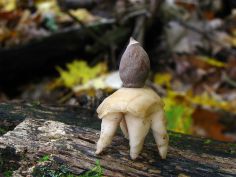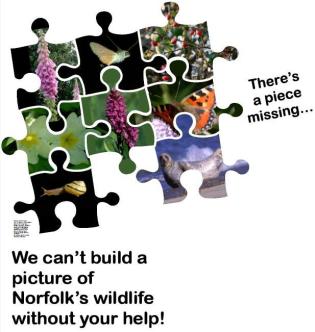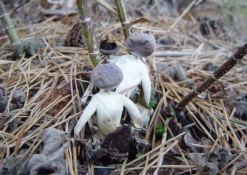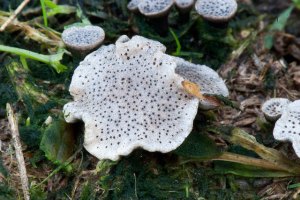Mush-room for a new species
You guessed it, a new species of fungus has been found in Norfolk! The Geastrum britannicum, named so as it has only been found in Britain, was discovered by Jonathon Revett, part of the Norfolk and Norwich Naturalists Society, near Cockley Cley, West Norfolk in 2000. Initially, nothing came of it, as it was thought to be part of the existing rayed earthstar family (see below for a comparison).

Geastrum quadrifidum, part of the pre-existing earthstar family (Credited to itsnature.org)
However, this year, 15 years after it was collected, interest in the species was sparked as mycologists in Spain sought specimens to undertake DNA analysis.
Despite the similarity in appearance, DNA analysis showed it was nothing ‘lichen’ its earthstar friends. Hence, it was confirmed as a new species, not just for Norfolk, but in the world!
Time for some Fun-gi Facts
- Since 1969, Fungi have been officially recognised as a distinct group.
- Don’t let there appearance fool you, DNA analysis also shows Fungi are more closely related to animals than they are plants.
- Unlike plants, Fungi have the equivalent of an external stomach and release enzymes to break down nutrients before absorbing them. As a result, they tend to live on or in their food source.
See the Kew Royal Botanic Gardens (here) for a ‘truffle’ more interesting facts.
In terms of fungus in Norfolk, Geastrum britannicum is not the only rare fungus around. Norfolk had been the only place in Britain where all 17 species of rare rayed earthstar, prior to our newly discovered fungus, had been recorded. See below a video of a rayed earthstar which opened over a period of 2-3 days.
Another example is the IUCN red listed Poronia punctata or nail fungus, which was rediscovered in Norfolk in 2012, 68 years since it had last been recorded in the county. Interestingly, this Fungi is only found on old dung, especially from horses and pony’s. Hence, as vehicles have replaced these for transport, their populations have declined.
So, how to get involved?
1. Go on a Foray – One way to learn more is to visit your local Naturalist society, emphasising the -al- in Naturalist. In Norfolk, we have the Norfolk and Norwich Naturalists’ Society, which has a Fungus Study Group which runs ventures out to find Fungi that are open to complete beginners. See here for more information.

We need your help! You can add your records here.
2. Record what you see – Your local record centre would love to hear about what Fungi you see. For Norfolk, that’s us, NBIS. Here is a link to our simple online form so that you can record your Norfolk records. Don’t worry if it is rare or not, we love to hear about all records for any species.
3. Find out more – More information about the finding of Geastrum britannicum can be found here (EDP, Metro) or for something more challenging, Zamora et al. (2015) revise the classification for the Geastrum sect. to account for the new species that have recently been discovered through DNA analysis (See reference below). For general information on Fungi, Kew Royal Botanical Gardens (here) is a good place to start.
References
Zamora, J. C., Calonge, F. D., & Martín, M. P. (2015). Integrative taxonomy reveals an unexpected diversity in Geastrum section Geastrum (Geastrales, Basidiomycota). Persoonia, 34: 130-165.


